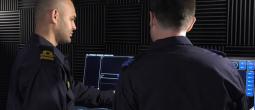

A key part of your experience with the ISDC will be sharing ideas, news and views with your crewmates. The site offers a number of features to facilitate this.
Groups
Groups are Facebook-style collaboration spaces that allow members with similar interests or working in the area to share updates, exchange insights and debate ideas. The available groups can be viewed under the NETWORK menu option.
If you see a group that interests you, click the REQUEST GROUP MEMBERSHIP link at the top right of the group screen (under WELCOME).
Once you’re a member of a group, you can add your own posts, which could take the form of a question, a link to an interesting article, or an update on something you’re working on that you need feedback for.
You can also comment on other posts (see below).
Updates
When a new post is added to a group that you’re subscribed to, you’ll get an email notification.
Mission Group
The Mission Group is for general discussions about life in the ISDC, mission news and updates about the organisation. All members automatically become members of the Mission Group.
Discussions
Commenting on blogs or group posts is a great way to start or participate in a discussion. Comments take the form of a threaded discussion under the original blog or post.
Whenever a new comment is added to a blog or post, a red dot is displayed on its summary teaser with the number of new (unread) comments displayed. Clicking on the red dot will take you directly to the first of the new comments.
If new comments have been added to discussions that you’re already involved in, these will be displayed on your personalised front page at the crew site, under the YOUR DISCUSSIONS heading. Discussions with the most recent comments will be displayed first.
Within the discussion itself, new comments are easy to spot. All new comments have the word NEW superimposed over the contributor’s profile pic in large white letters. You can click the NEW COMMENTS button at the top of the discussion list to go directly to the first new comment.
Teams
Crew teams allow members with complementary skills and interests to form crews for simulation missions, with each crew member taking a simulator post based on their training and qualifications.
Depending on the scenario’s requirements a simulation crew might need rated specialists across helm, tactical, operations, engineering and science systems, so a team with a good mix of ratings will have a greater choice of mission scenarios.
If you already have a group of interested friends you can create your own team, or you can browse existing teams to find one you’d like to join.








